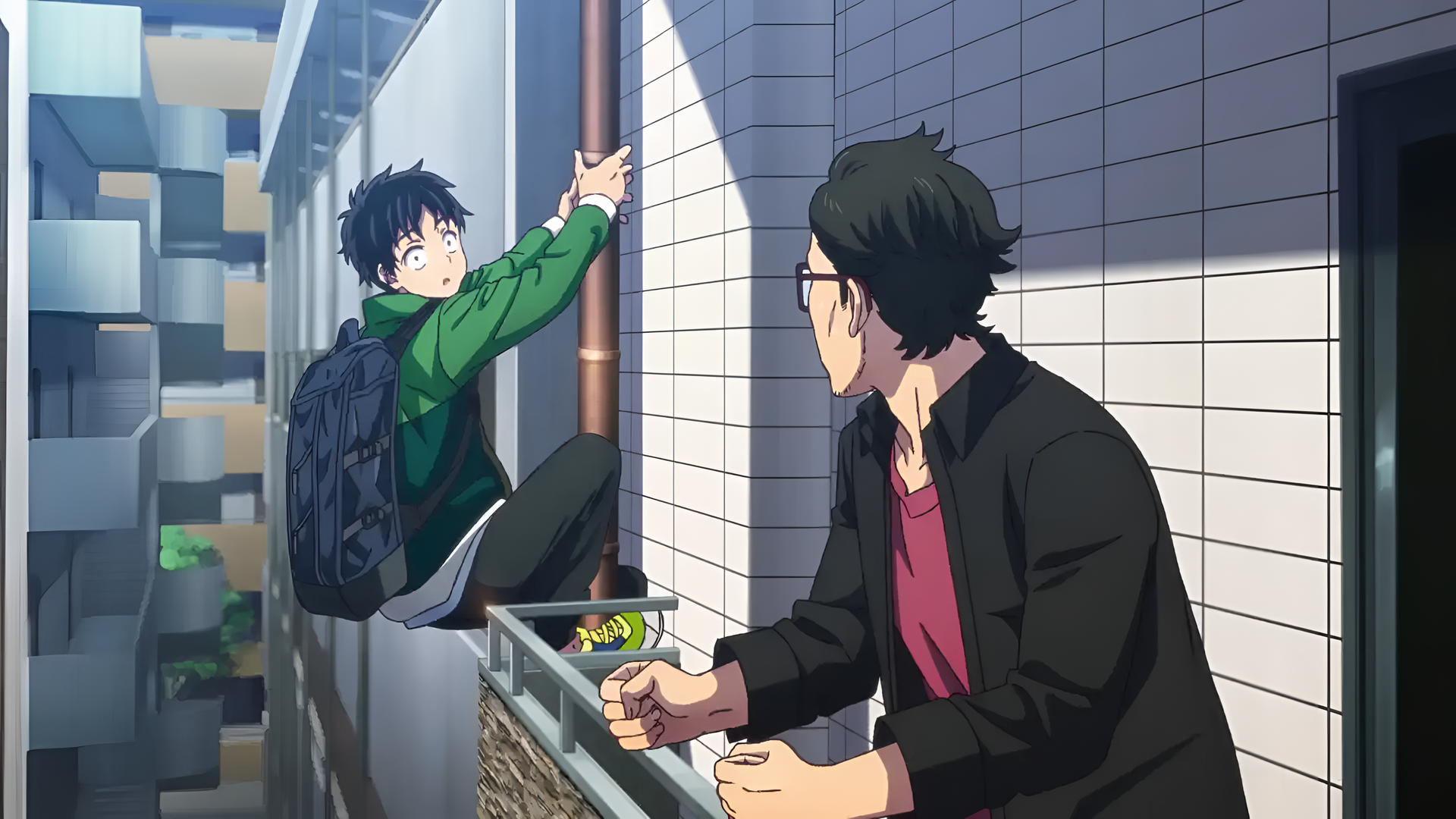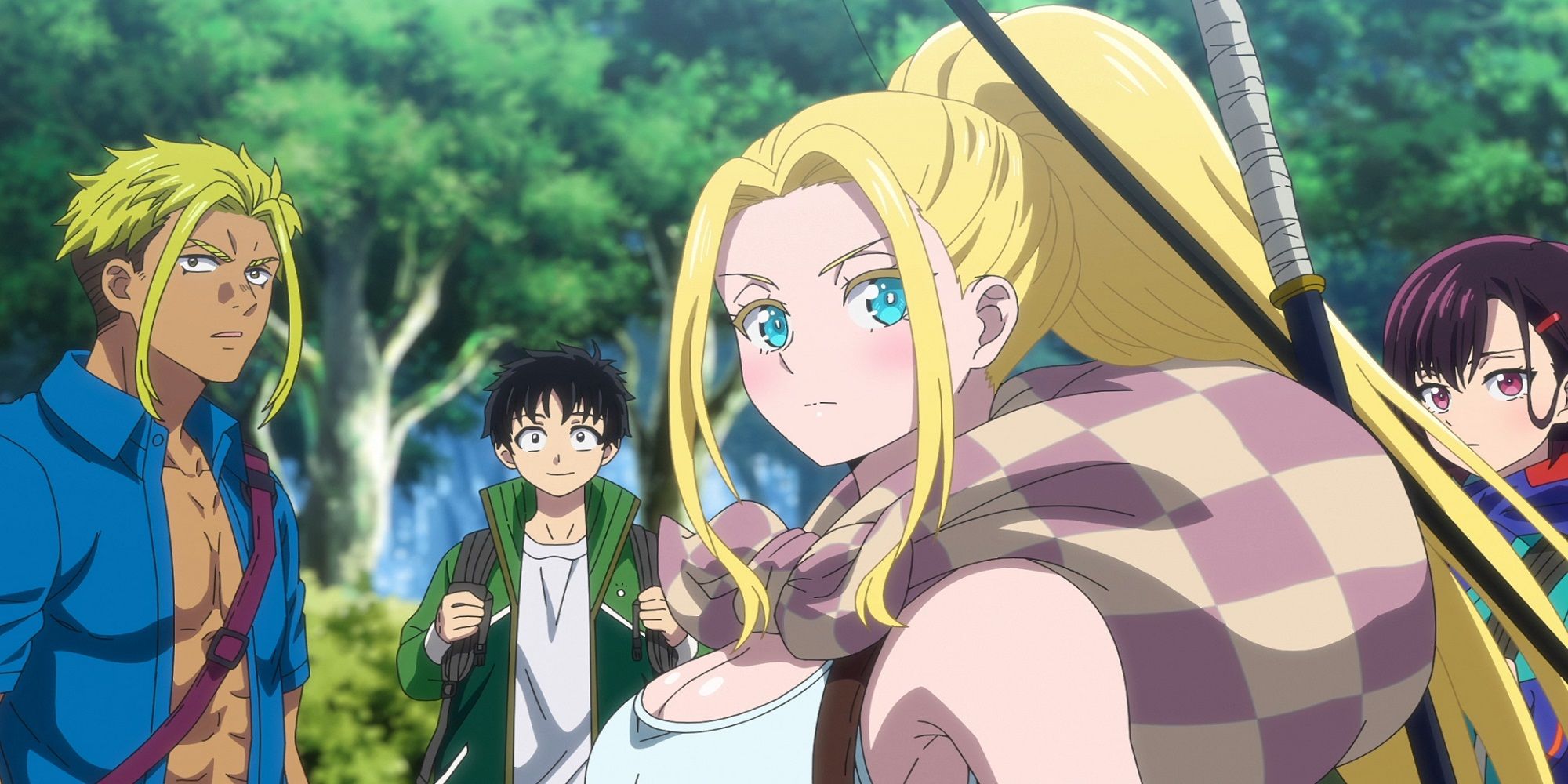
Prologue:
After enduring three gruelling years at the company from hell, 24-year-old Akira Tendo finds himself mentally and physically drained. Even his crush from the accounting department, Saori, wants nothing to do with him. Just as life seems like one big disappointment, the unexpected occurs: the zombie apocalypse hits Japan! Amidst hordes of ravenous zombies, Akira has an epiphany that alters his perspective forever. With his nightmare job now a thing of the past, Akira rediscovers his zest for life. It’s time to embark on a bucket-list adventure!
IMDB: 7.9
It’s Review Time: 8
Genre: Anime, Action, Adventure, Zombie Apocalypse
Maturity Rating: 15+
Episodes and Runtime:
12 Episodes, 24 minutes each
Cast & Crew:
Based on a manga by Haro Aso
Shuichiro Umeda and Zeno Robinson as Akira Tendo
Makoto Furukawa and Xander Mobus as Kenichirô Ryûzaki
Tomori Kusunoki and Abby Trott as Shizuka Mikazuki
Minami Takahashi and Laura Post as Beatrix Amerhause
Kenta Miyake and Jamieson Price as Gonzo Kosugi

Plot:
The story unfolds in present-day Japan, where we meet Akira Tendo, a young graduate who has just started working at his dream company. However, his excitement quickly turns to disappointment as he encounters a toxic and exhausting work culture that offers no respite. Adding to his frustration, Akira finds little support or cooperation from his seniors and managers.
As Akira wakes up and sets out for work, he discovers that the world he once knew has succumbed to a zombie apocalypse. This revelation dawns on him: he’s finally liberated from the chains of his company. With newfound freedom, Akira resolves to pursue his long-held dreams and desires.
Crafting a bucket list, Akira embarks on a journey to fulfill his aspirations. Along the way, he encounters a diverse array of individuals who become both friends and adversaries in his quest.

Review:
“Zom 100” presents a refreshing perspective on the zombie apocalypse genre. Unlike many post-apocalyptic stories where fear and despair dominate, the main characters in “Zom 100” embrace the chaos with enthusiasm and joy, treating it as a grand adventure. This unique approach sets it apart from other series, movies, and anime in the genre, making it a standout and enjoyable watch.
I have watched projects like The Walking Dead, The Last of Us, 28 Weeks Later, Army of the Dead, World War Z, and many more. Unlike its counterparts, “Zom 100” approaches the apocalypse with a sense of optimism and adventure, deviating from the typical narrative of despair and hopelessness. This unique take breathes new life into the genre, offering viewers a fresh and enjoyable experience amidst the sea of post-apocalyptic shows and movies.
One of the disappointments of “Zom 100” is its limited duration. As a mini-series, much like its manga counterpart, it leaves viewers longing for more exploration of the fascinating world it presents. The camaraderie between the four friends and their adventures across Japan hint at the potential for even grander journeys, perhaps spanning the entire globe. While the creators could have delved deeper into this captivating universe, the brevity of the series also leaves room for imagination and speculation among fans about what could have been.

5 things I liked about Zom 100:
- One of the standout elements of the series is its exceptional editing and cinematography. Throughout the entire show, viewers are kept engaged without a dull moment. The creators skillfully allocate precise time to explore and develop relevant points while maintaining the story’s momentum. Not a single minute is wasted, and every scene and episode contributes meaningfully to the viewer’s experience.
Moreover, the cinematography of the anime is truly captivating. The vibrant colours leap off the screen, creating a visually stunning spectacle for the audience. The depiction of blood in various hues adds an intriguing dimension to the zombie apocalypse, making it even more compelling. Overall, the combination of meticulous editing and breathtaking cinematography elevates the viewing experience of “Zom 100” to new heights. - The introduction of diverse characters throughout the 12 episodes enriched the storyline of the anime, particularly adding depth to Akira Tendo’s journey. While Akira exuded a fun-loving demeanour, his struggles under the oppressive reign of his toxic boss, Gonzo Kosugi, added layers to his character arc. Gonzo’s dominating presence, exploiting those around him for personal gain, resonated both pre and post-apocalypse, further complicating Akira’s challenges.
As the narrative progresses, Akira’s interactions with individuals like Shizuka, his friend Kencho, and the enigmatic German woman Beatrix contribute to his personal growth and resilience. Each character brings out different facets of Akira’s personality, pushing him to confront his inner conflicts and embrace his potential.
Upon their arrival at Akira’s village, viewers are introduced to his parents and other villagers who embody resilience and community spirit. Living life to the fullest, they prioritize renewable resources, enhancing their quality of life amidst the chaos of the apocalypse. These encounters deepen the audience’s understanding of Akira’s roots and the values that shape his worldview. - Amidst the chaos of the apocalypse, “Zom 100” skillfully infuses wonderful and subtle humour throughout the series. Each joke feels perfectly placed and seamlessly integrated into the storyline, enhancing the overall narrative rather than feeling forced or out of place. The accuracy of the humour and jokes adds depth to the storyline, as each jest carries the backdrop of the ongoing narrative, contributing to the development of characters and plot twists. This delicate balance of humour and storytelling makes “Zom 100” not only entertaining but also a memorable and enjoyable viewing experience for the audience.
- The emotional depth portrayed in “Zom 100” resonates with viewers, touching on themes like loneliness, adult responsibilities, and the pursuit of success. Many can relate to leaving home, navigating corporate life, and grappling with loneliness. These universal experiences make the characters’ journeys compelling and easy to connect with, fostering a strong emotional bond between the audience and the story.
- “Zom 100” presents a distinctive take on the zombie apocalypse genre, where the main protagonist embraces the chaos of the torn-apart world. Each character strives to improve their life amidst the challenges they face. Even the antagonist shares similar struggles, offering opportunities for character growth, often guided by Akira. This dynamic creates a captivating narrative where every character contributes to the rich storytelling and thematic exploration of personal growth and resilience in the face of adversity.

5 things I disliked about Zom 100:
- The length and number of episodes in “Zom 100” left me wanting more. While it’s presented as a mini-series, I believe the story deserves more exploration, even beyond its current endpoint.
A second season could have delved deeper into Akira and his friends’ bucket list adventures, perhaps culminating in their quest to find a cure for the virus. This expansion could have provided additional layers to the storyline and character development, offering viewers a more comprehensive and satisfying narrative experience. - “Zom 100” offers a unique take on the zombie apocalypse genre, which may not appeal to everyone who prefers gritty and dark narratives. While some anticipate intense survival scenarios and graphic violence, the series focuses on humour and character-driven storytelling. While it may not cater to all tastes, its unconventional approach provides a refreshing perspective for those seeking a lighter take on the genre.
- The unconventional portrayal of blood in “Zom 100,” where it spreads in different colours like red, green, yellow, and blue, may appear childish to some and dilute the seriousness of the storyline. While visually vibrant, it can detract from the apocalyptic atmosphere viewers anticipate. Additionally, the rapid transformation of humans into zombies after being bitten may undermine the sense of suspense and dread typically associated with such scenarios, as the suffering is depicted briefly before the transformation occurs.
- Certain scenes in the series, such as zombies driving trucks or handling objects, may appear impractical and inconsistent with the established norms of zombie behaviour. Typically, zombies are depicted as primitive and lacking in cognitive abilities, making such actions seem out of place. This inconsistency throughout the series may detract from the believability of the storyline and disrupt the immersion for some viewers.
- At certain points in the series, viewers may notice a slowdown in the story narration, with pacing that feels less dynamic compared to other parts of the series. While the creators allocate ample time for character evolution and adaptation, some viewers may perceive these moments as minor drawbacks. However, these instances of pacing may not significantly detract from the overall viewing experience, but they remain a minor nitpick for some audience members.


